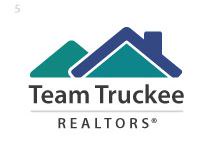Is Tesla coming to Tahoe Reno area….?
The battle for electric car maker Tesla Motors’ multibillion-dollar battery plant is supposed to be a four-way race.
Some site selection experts, however, believe the fight for the Gigafactory likely boils down to one heavyweight and a plucky upstart.
In one corner is San Antonio, a city located in a big state with equally big pockets to invest in economic development.
In the other corner is Reno, which has less than a fifth of San Antonio’s population and even fewer resources when it comes to ponying up financial incentives.
“A case can be made for both Arizona and New Mexico … and you have to give them credit,” said John Boyd, a principal of Princeton, N.J.-based site selection firm The Boyd Company. “But the two leading contenders are Reno and San Antonio.”
STORY: Tesla makes improvements to Model S electric car
Tesla says it likely won’t announce a final site for the Gigafactory before the end of the year. In the meantime, it will start breaking ground in two or even three states while it makes its decision — a move that site selection experts described as unusual.
“I think it’s just a matter of Tesla saving time on the development process once it picks a site,” said Dennis Donovan, a principal with another New Jersey-based site selection firm, Wadley Donovan Gutshaw Consulting.. “(The concurrent development) is actually not that bad for those communities even if the company goes somewhere else because the site infrastructure will be valuable for other prospective tenants.”
Boyd, on the other hand, thinks that the multi-pronged development approach helps Tesla maintain secrecy in case information leaks out at one of the sites. It’s also an excellent way for the company to try to get as many incentives from all states involved, including its desire to change the franchise model for car sales, Boyd added.
While Tesla has already announced Nevada is on the shortlist of states in the running to be selected Tesla’s massive battery factory, talk last week among local economic development officials zeroed in on the Reno Tahoe Industrial Center as the site most likely to be selected by Tesla should the electric car company choose to come to Nevada.
Lance Gilman, an industrial center principal and its director of marketing, said Friday that he has been working with Tesla “for months.” But he said “there is no signed transaction” with Tesla.
In addition to an excavation permit, the contractor for the project has air quality and storm water permits from Nevada’s Department of Environmental Protection.
“The permit allows them to move dirt around and begin prepping for construction,” said NDEP spokeswoman Jo Ann Kittrell. “We don’t know what it is.”
A tale of two cities
For areas that seem quite different on the surface, the similarities between The Biggest Little City and the Alamo City are what make them the top Gigafactory contenders for site selection, according to experts such as Boyd.
For starters, both are right-to-work states, Boyd said. Tesla has firsthand experience with the higher labor costs associated with manufacturing in California, which is not a right-to-work state. You can bet that this is one lesson Tesla CEO Elon Musk would rather not repeat — making it bad news for New Mexico, Boyd said.
Arizona, meanwhile, recently failed to pass a bill that would have allowed Tesla to bypass dealerships in the state and sell its cars directly to consumers. Although some analysts labeled the development as the death knell for Arizona’s chances to land the Gigafactory, it is not the deal breaker that some are making it out to be, Boyd said. Instead, Arizona’s challenge in landing the high-profile plant lies elsewhere.
“Arizona has a very positive business climate but at the end of the day, it has that corporate income tax,” Boyd said. “You have lower operating costs in Nevada and Texas.”
The aforementioned advantages dovetail nicely with other factors deemed essential for a facility such as the Gigafactory. Nevada and Texas have a solid labor pool of semi-skilled workers to draw from as well as a strong utility infrastructure with access to alternative energy sources such as solar and wind, Donovan said.
“In terms of shipping products by truck or rail, Reno and San Antonio are also very, very strong,” Donovan added.
Both sites are also a relatively short distance from major ports — Houston in the case of San Antonio and Oakland for Reno. These would be key advantages if Tesla and Panasonic end up expanding their partnership for battery products and ship to a global market. The company has already announced that it wants to begin operations in China within five years, Boyd said.
Despite the similarities between Reno and San Antonio, however, Tesla’s decision will ultimately boil down to their differences. In addition to its deeper pockets, Texas has stronger workforce development and already has a precedent for auto manufacturing. Reno, meanwhile, has its proximity to Tesla’s corporate headquarters in the Bay Area as well as potential lithium resources.
Regardless who the winner ultimately is, one thing is for sure, according to Boyd and Donovan. Tesla will be a game changer for the area that lands it. The benefits even go beyond the 6,500 jobs and $4 billion to $5 billion investment for the facility.
“This is the type of economic development project that people can build a career with,” Boyd said. “It would be the most significant economic development achievement for Gov. Brian Sandoval, for example. It also would be a final major victory for Gov. Rick Perry.”
Donovan agreed.
“It would go on in the annals of site selection as one of the biggest economic development wins,” Donovan said. “It’s that huge.”
–


Leave a Reply